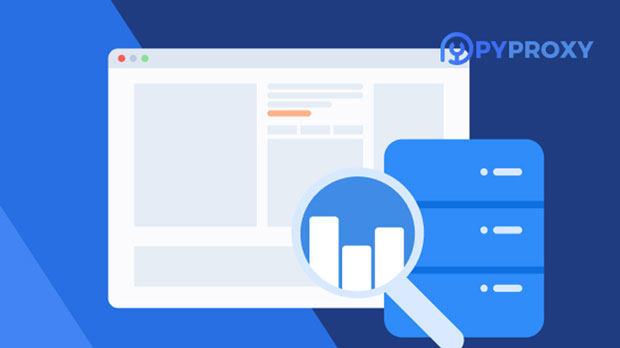What kind of web activities are suitable for using Socks5 proxy server?
A socks5 proxy server is a versatile tool that offers users an additional layer of privacy, security, and access control over their internet activities. Unlike traditional proxies, Socks5 operates at a lower level of the OSI model, allowing it to handle all types of internet traffic without needing to alter the data or protocol. This makes it highly suitable for a variety of online activities, especially when anonymity, security, and bypassing geo-restrictions are essential. In this article, we will explore which online activities benefit most from the use of a socks5 proxy server, providing a clear understanding of its use cases and advantages. 1. Anonymous Browsing and Online PrivacyOne of the primary reasons users turn to socks5 proxies is to protect their privacy while browsing the internet. Unlike HTTP proxies, which only work for web traffic, Socks5 can handle any type of traffic, including web, FTP, and P2P. This makes it an ideal solution for users who wish to browse the internet anonymously, without exposing their IP address or other identifying information to websites they visit. By routing traffic through a Socks5 proxy server, users can mask their real IP address, making it much more difficult for third parties to track their online activity.For individuals who are concerned about their online privacy—such as journalists, activists, or simply those who want to avoid being tracked—Socks5 provides a more robust solution compared to other proxies. It works seamlessly with various browsers and applications, offering a wide range of flexibility without significant compromises on speed.2. Geo-restricted Content AccessIn today's global internet ecosystem, many websites and streaming platforms impose geographical restrictions on their content. For example, a user in one country may not be able to access services like Netflix, Hulu, or BBC iPlayer due to content licensing agreements. A Socks5 proxy server can be highly effective in bypassing such geo-restrictions by masking the user’s IP address and making it appear as though they are browsing from a different location.By connecting to a Socks5 proxy server located in a country where the content is available, users can unlock access to streaming services, websites, and other digital content that would otherwise be inaccessible. This is particularly useful for users who travel frequently or want to access content from different regions without facing the restrictions imposed by their physical location.3. Online Gaming and Avoiding Region-based RestrictionsOnline gaming has become a massive global industry, with players from all over the world competing in multiplayer games. However, many games impose regional restrictions, limiting access to certain servers, content, or features based on a user’s location. By using a Socks5 proxy server, gamers can bypass these restrictions and access game servers in other regions.For example, a player in Asia might want to access a North American server to take advantage of certain in-game events, promotions, or lower latency. A Socks5 proxy can provide a stable and fast connection to servers in other regions, allowing gamers to enjoy a wider range of content and reduce lag or connection issues that may arise from region-based restrictions.4. Security and Data Protection for Public Wi-FiPublic Wi-Fi networks, such as those found in coffee shops, airports, and hotels, are notorious for being insecure and vulnerable to cyberattacks. When connecting to such networks, users risk exposing sensitive data, including passwords, bank account details, and other personal information. Using a Socks5 proxy server can significantly enhance security by encrypting the traffic between the user's device and the proxy server, making it much more difficult for hackers or malicious actors to intercept or manipulate the data.In situations where users must access sensitive information while on public networks, such as checking bank accounts or logging into work-related platforms, using a Socks5 proxy can be a simple yet effective security measure. Additionally, the proxy can help protect against man-in-the-middle attacks, which are particularly common in unprotected Wi-Fi environments.5. Avoiding IP Bans and RestrictionsMany websites and online platforms use IP-based restrictions to enforce rules, prevent abuse, or control access. For instance, forums, social media platforms, or even some e-commerce sites might impose temporary or permanent bans on specific IP addresses due to suspicious activities like spamming or breaking community guidelines. If users find themselves mistakenly banned or restricted, using a Socks5 proxy can help them regain access by changing their IP address.This makes Socks5 a valuable tool for individuals who want to avoid IP bans and continue accessing platforms without interruption. It’s also useful for businesses or individuals who need to test their websites or services from different locations without triggering security measures that might block their access.6. P2P File Sharing and TorrentingSocks5 proxy servers are particularly popular among users who engage in P2P file sharing and torrenting. Torrenting involves sharing files directly with other users, and while it is a legal activity in many regions, it can also expose users to potential risks, such as copyright infringement or surveillance. By using a Socks5 proxy, users can hide their real IP addresses while torrenting, reducing the likelihood of facing legal action or having their internet activities monitored.Since Socks5 supports P2P traffic, it allows torrent clients (like uTorrent or qBittorrent) to use the proxy for routing data. This means users can download and upload files more securely and anonymously. However, it’s important to note that using a proxy does not inherently make illegal activities legal, so users should still be mindful of local laws and regulations regarding torrenting.7. Web Scraping and Data HarvestingWeb scraping is a technique used to collect large amounts of data from websites, often for business or research purposes. However, many websites impose limitations on how frequently data can be accessed to prevent abuse, including blocking or throttling IP addresses that make too many requests in a short period. Using a Socks5 proxy server can help mitigate these restrictions by rotating IP addresses and allowing users to make requests from different locations.For businesses involved in market research, competitive analysis, or SEO (Search Engine Optimization), web scraping is a vital activity. By employing a Socks5 proxy, users can gather data from websites without risking being blocked, ensuring their scraping operations continue smoothly and without interruptions.8. Enhanced Performance and Speed for Specific ApplicationsWhile Socks5 proxies are often used for privacy and security purposes, they can also help optimize the performance of certain applications. For example, in cases where users experience slower speeds due to network congestion or throttling by ISPs, a Socks5 proxy server can help bypass these issues. This is especially beneficial for users who want to improve their connection speed for activities such as video streaming, gaming, or accessing large files.By connecting to a high-performance Socks5 proxy, users can often enjoy reduced latency and faster download or upload speeds, making it a suitable tool for specific use cases where performance is a priority. ConclusionSocks5 proxy servers offer a wide range of benefits for various online activities, from enhancing privacy and security to bypassing geo-restrictions and improving performance. Whether you’re looking to protect your identity while browsing the internet, access content from different regions, or ensure secure connections on public Wi-Fi networks, a Socks5 proxy server is a powerful tool to achieve these goals. By understanding the use cases discussed in this article, users can make an informed decision about when and how to utilize a Socks5 proxy server to optimize their online experiences.
2024-12-23

























































